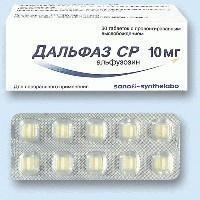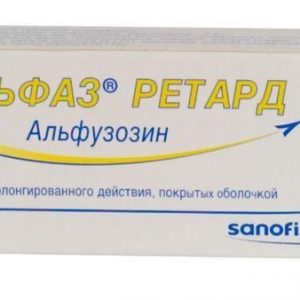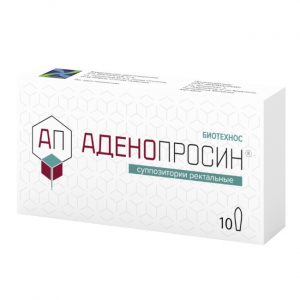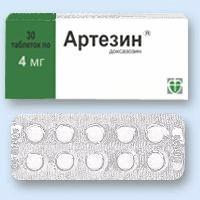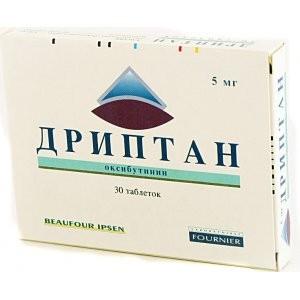Description
Release form
Extended-release tablets
Packing
30 tablets.
Pharmacological action of
Pharmacodynamics of
Alfuzosin is a quinazoline derivative that is active when administered orally This is a selective antagonist of postsynaptic alpha-1 adrenergic receptors with a peripheral site of action. Pharmacological tests in vitro showed the selectivity of alrenosis-1, alpha-1 alpha-1 alpha-1 alpha-1 alpha-1 alpha-1-alpha-1-alpha-1-alpha-1-alpha-1-alpha-1-adrenergic alpha-1-adrenoreceptors triangle of the bladder and in the prostatic urethra. As a result of direct exposure to smooth muscles in prostate tissue alpha-1-adrenergic blockers reduce resistance to urine flow. Alfuzosin improves excretion, reducing urethral tone and resistance to outflow from the bladder, and facilitates emptying of the bladder. In placebo-controlled trials of alfuzosin in patients with benign prostatic hypertrophy, a significant increase in the maximum speed current (Qmax) by an average of 30% in patients with Qmax 15 ml / sec. This improvement was observed starting with the first dose.
Significant decrease in resistance to urine flow and an increase in the volume of urine excreted, causing the urge to urinate.
Significant decrease in residual urine volume.
Pharmacokinetics:
The maximum plasma concentration is reached approximately 3 hours after ingestion.
The binding of alfuzosin hydrochloride to plasma proteins is about 90%.
The half-life of the drug is 8 hours.
The bioavailability of retard tablets is approximately 15% less compared to 2.5 mg of alfuzosin. Eating does not affect the absorption of the active substance.
Alfuzosin is metabolized mainly in the liver, only 11% is excreted unchanged in the urine. Most metabolites (which do not have activity) are excreted in feces (75-91%).
In persons older than 75 years, absorption is faster and the maximum concentration and bioavailability are higher. Distribution volume reduced. The elimination half-life does not change
The pharmacokinetic profile of alfuzosin does not change when taking the drug with food.
Distribution volume and clearance of alfuzosin increased in renal failure, both against the background of dialysis, and without it. There is no need to modify the dosage in patients with impaired renal function and with creatinine clearance> 30 ml / min.
In patients with severe hepatic insufficiency, the elimination half-life is increased.
Bioavailability, in comparison with healthy volunteers, is increased.
The pharmacokinetic profile of alfuzosin does not change in chronic heart failure.
Contraindications
hypersensitivity to alfuzosin and / or other components of the
preparation orthostatic hypotension
severe liver function impairment (Child-Pugh class C)
severe renal impairment (creatinine Cl <30 ml / min) intestinal obstruction due to the presence of castor oil in the preparation) simultaneous administration of other alpha1-blockers. Special instructions Some people, especially patients receiving antihypertensive drugs, may develop orthostatic hypotension with clinical symptoms (dizziness, severe weakness, cold) within a few hours after taking alfuzosin (as well as after taking other alpha1-blockers) sweat) or without it. Orthostatic hypotension is usually transient and occurs usually at the beginning of the drug and usually does not require discontinuation of treatment. When these phenomena appear, the patient must be in a horizontal position until they completely disappear. Before starting treatment, the patient should be warned about the possibility of such phenomena. Caution should be exercised when prescribing alfuzosin to patients with orthostatic hypotension with clinical symptoms, patients with a history of a pronounced hypotensive reaction in response to taking other alpha1-blockers – more careful monitoring of blood pressure is required, including when moving from horizontal to vertical, especially at the beginning of treatment. Antianginal therapy should continue in patients with coronary artery disease. When resuming or worsening angina, treatment with alfuzosin should be discontinued. Influence on the ability to drive vehicles and work with mechanisms. Especially at the beginning of treatment, the possibility of developing dizziness and an asthenic state should be taken into account, which may affect the ability to drive vehicles and work with mechanisms. Composition 1 tablet contains: first layer: hypromellose 79.75 mg, castor oil hydrogenated 13.5 mg, ethyl cellulose 20 5 mg, dye iron oxide yellow (E172) 0.25 mg, silicon dioxide colloidal aqueous 0.5 mg, magnesium stearate 1 mg, second layer: alfuzosin hydrochloride 10 mg, mannitol 10 mg, hypromellose 10 mg, MCC 65 mg, povidone 3.2 mg, silicon dioxide colloidal aqueous 1.25 mg, magnesium stearate 1 mg, third layer: hypromellose 114.01 mg, hydrogenated castor oil 27.9 mg, povidone 4.72 mg, iron dye oxide yellow (E172) 0.15 mg, colloidal aqueous silicon dioxide 1.05 mg, magnesium stearate 2.17 mg Dosage and administration Inside, after eating, swallowing whole, 10 mg daily. Use as an adjuvant when using a catheter for acute urinary retention associated with benign prostatic hyperplasia: recommended dose – 1 table. 10 mg per day, after meals, starting from the first day of catheterization. The drug is used for 3-4 days, i.e. 2-3 days during the use of the catheter and 1 day after its removal. Side effects From the side of the central nervous system and psyche: often – weakness, a feeling of general discomfort, headache infrequently – drowsiness, dizziness, cerebral ischemia (in patients with coronary artery disease). From the CCC side: infrequently – tachycardia, palpitations, fainting, orthostatic hypotension is very rare – angina pectoris in patients, suffering from coronary heart disease, atrial fibrillation. From the gastrointestinal tract: often – nausea, abdominal pain, dry mouth rarely – diarrhea is very rare – damage to hepatocytes, liver disease with cholestasis. Skin and allergic reactions: infrequently – rash, itching very rarely – urticaria, angioedema. From the whole organism: often – asthenia infrequently – flushing of the skin, swelling, chest pain is very rare – priapism. Drug interaction When used with blockers? 1-adrenergic receptors (prazosin, urapidil, minoxidil) there is an increase in the hypotensive effect, the risk of developing severe postural hypotension (the combination is not recommended). With the simultaneous use of Dalphase SR with antihypertensive drugs, the risk of developing postural hypotension due to additive effects increases (the combination should be used with caution). With simultaneous use with CYP3A4 inhibitors (ketoconazole, itraconazole, ritonavir), an increase in the concentration of alfuzosin in blood plasma is observed (the combination should be used with caution). Overdose Recommended combination: With alpha-1 receptor blockers (prazosin, urapidil and minoxidil): increased antihypertensive effect. Risk of severe postural hypotension. Combinations to be taken into account: With antihypertensive drugs: increased hypotensive effect and the risk of postural hypotension (additive effect) (see Special instructions ) With nitrates: enhanced antihypertensive effect. With inhibitors of the CYP3A4 system – ketoconazole, itraconazole and ritonavir: increased concentration of alfuzosin in the blood Storage Conditions The product should be stored at a temperature not exceeding 25 ° C. Expiration 3 years. Active ingredient Alfuzosin Terms of dispatch from pharmacies Prescription from Dosage form tablet prolong. Sanofi-Aventis, France
